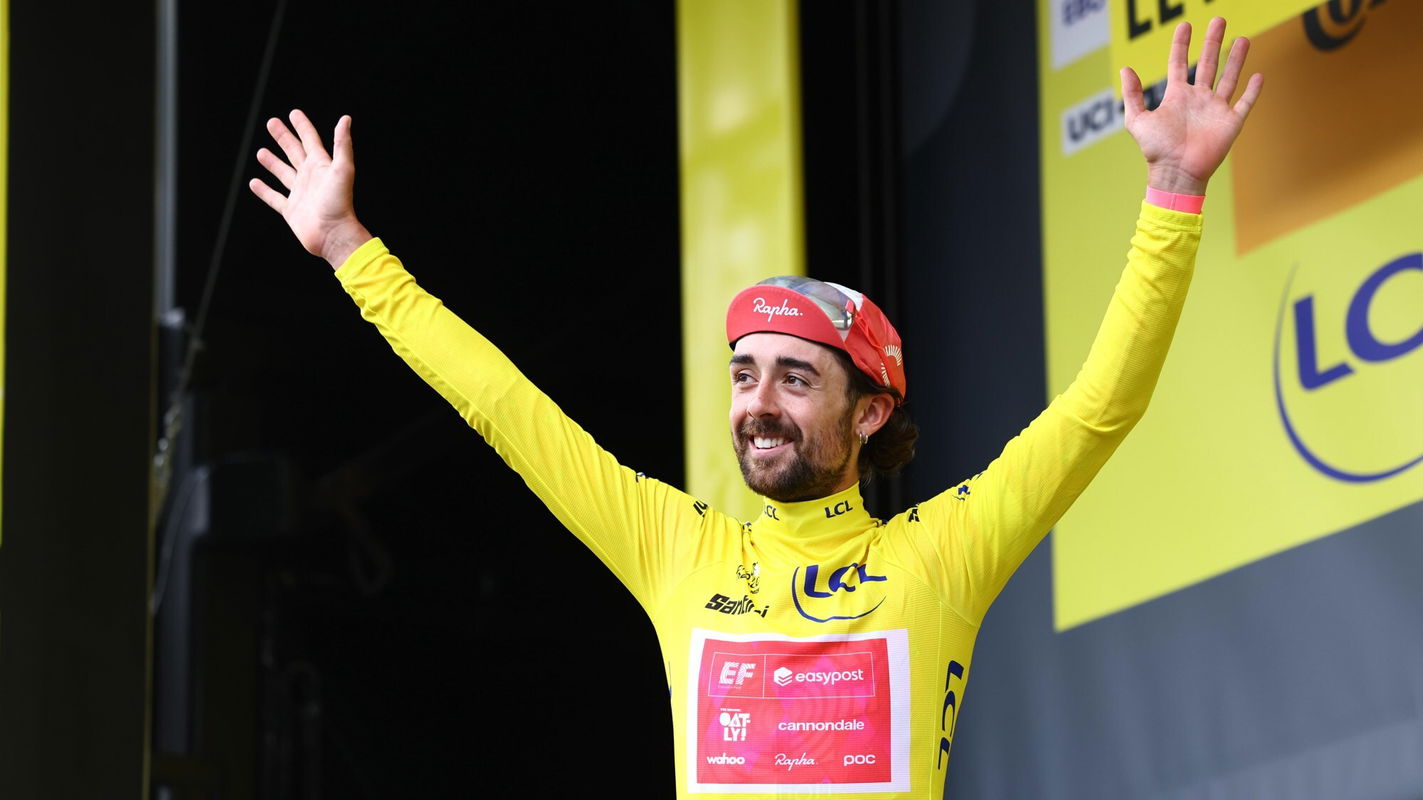Ben Healy’s remarkable Tour: from stage win to yellow and a smile on the Hautacam
In the space of three weeks, Ben Healy went from an uncertain build-up and a team forced to rethink its Tour strategy to becoming one of the defining riders of the 2025 race. A stage win, two days in yellow, a top ten on GC and the title of most combative rider turned his race into a breakthrough performance that delivered on the promise he had shown. Speaking with The Athletic, Healy looked back on the three weeks that put him in the spotlight of the cycling world.

Healy had shown strong form in Liège-Bastogne-Liège, finishing third. But by the time the Tour approached, he felt sluggish. The Critérium du Dauphiné, the traditional warm-up race for the Tour, passed without setbacks, yet his form never really came together. “The quiet Dauphine was a product of me not feeling good. I just didn’t seem to be responding to training that well, struggling to lose weight. It was a bit of a panic,” he told The Athletic.
EF Education-EasyPost’s original Tour leader Richard Carapaz had withdrawn a week before the start due to illness. With his absence, the team focused on stage wins. “Last year, I just went for it every day without really thinking too deeply. And I definitely paid for that in the second and third week. So it was really early in December that I started thinking: ‘How am I going to win this year?’”
Stage six, from Bayeux to Vire Normandie, was the first target. The 201.5km route offered constant climbing. The breakaway included Mathieu van der Poel, Quinn Simmons and Simon Yates, but Healy was not concerned about names. “No matter who was in it, I knew how I had to win, and that didn’t really change. I knew I couldn’t take Van der Poel to the finish, but to be honest, I don’t really want to take anyone to the finish.”
He attacked with 42km to go, choosing a subtle rise picked by his sports director Tom Southam. “I came from the back with a bit of speed, and when you come past at five kilometres per hour faster than anyone else, everybody looks at each other and thinks: ‘I don’t want to do that.’ Then it was just head down and go.” He crossed the line alone for his first Tour stage win.
Just four days later, Healy was in the spotlight again. Stage 10, through the Massif Central, saw him finish third and take the yellow jersey. “I don’t think yellow was on the team’s mind, but it was definitely on my mind. After stage six, I wanted to hang in there in case of that opportunity.”
He wore yellow for two stages. Healy even played a role in neutralising the race after Pogacar crashed, speaking to Jonas Vingegaard and Remco Evenepoel to slow the bunch. The next day, the heat and relentless pace on the Col du Soulor and Hautacam ended his time in yellow. “I really struggle in the heat; it’s a recurring weakness of mine. I could feel I had really good legs, but once I get to a point of overheating, it’s just so hard for me to come back from that. That’s when Sweeny came in and just poured every bottle he could over the back of my neck”
Losing yellow, however, became a moment of reflection rather than frustration. “It wasn’t until the stage when I lost it, and was looking down at the yellow bike, riding up the Hautacam with everyone cheering my name, looking at the names on the road, that I thought: ‘What have I just done?’ So even though I was losing the jersey, I was climbing up the Hautacam with a massive smile on my face. That was the first time I really appreciated being in yellow, because the rest of the time was so crazy.”
With the jersey gone, Healy’s goals became clear: defend his top ten on GC and chase more stage wins.
His next big chance came on stage 16 to Mont Ventoux. From a large breakaway, only Healy, Valentin Paret-Peintre and Santiago Buitrago remained. Healy looked strong but was outsprinted in the final 100 metres.
“I think it’s still more pride, to be honest,” Healy said. “I can’t be too disappointed. I wanted to race, I wasn’t able to pull it off, and Valentin was also super strong. It was still a really good day and a really good battle with him. For sure, I’m a little gutted to finish second, but that’s bike racing. You can’t win everything.”
The way Healy raced throughout the three weeks was recognised with the overall super-combativity award, given to the rider who animated the Tour the most from start to finish. “It’s definitely something that appeals to me,” he said. “As a byproduct of how I race, that’s a cool thing for sure. And getting to stand on the podium on the Champs-Elysees… how many riders ever get to do that?”
Looking ahead, Healy does not plan to target GC as a primary goal in future Grand Tours. “I really enjoy being aggressive, and that’s how I want to go forward. If I believe I can contend for a podium, then maybe my focus will switch. But right now, going for stage wins and being kind of backdoor on GC is how I want to go forward.”
Next on his agenda is the World Championships in Rwanda, featuring 267.5km and 5,475m of climbing. “That’s definitely the big goal for me,” he said. “Whatever it takes to get there in the best shape I can, that’s what I’m going to do.”
After a Tour de France like that, the peloton in Rwanda will be watching him even more closely.



